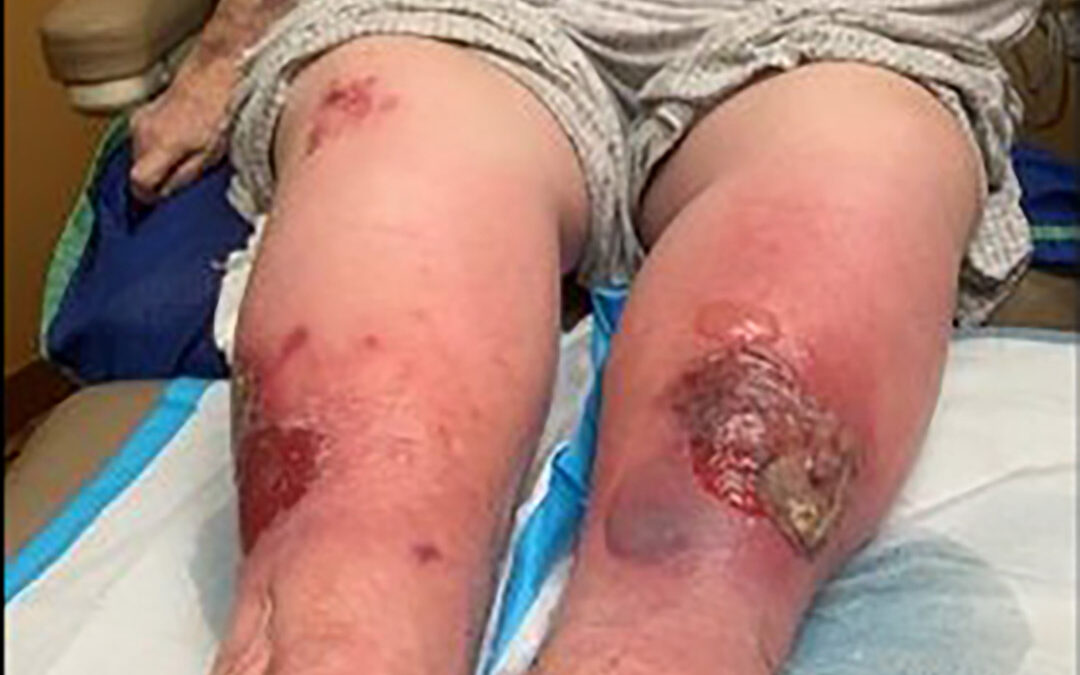The Lancet standing commission on dementia just published: Dementia prevention, intervention, and care: 2024 report of the Lancet standing Commission. (It’s available for free but you have to create an account.) It’s an article on the preventability of dementia that is exciting. It’s particularly relevant to wound care practitioners since the patients who get chronic wounds are also the ones who get dementia. Why? Because patients with wounds nearly always have one or more of the risk factors such as type 2 diabetes, vascular disease, hypertension, high low-density lipoprotein (LDL) cholesterol, coronary artery disease, obesity, depression and social isolation. Kris Eckert, Marissa Carter and I recently published an article about the prevalence of various serious comorbid diseases in wound care patients. (Also, check out the interview with Dr. Carter and me about the results.
The new study published in The Lancet estimates that close to 50% of cases of dementia worldwide can be prevented or delayed by improving 14 modifiable risk factors.
The fact is that most of the risk factors are “behavioral” – meaning that patients can actively make changes to impact them. These risk factors include lifestyle factors such as lack of physical activity, cigarette smoking, excessive alcohol consumption, and obesity. The CVD or vascular-specific risk factors include not only those behavioral factors but also hypertension, high LDL cholesterol, and diabetes. Cognitive engagement–specific risk factors include social isolation, which is a major risk factor for dementia, and untreated hearing or vision loss (which can exacerbate social isolation and depression). Two of these risk factors are new since the previous report in 2020: elevated LDL cholesterol and untreated vision loss, both of which are treatable.
This is paradigm-shifting because dementia is often perceived as an inevitable consequence of the aging process, with a major genetic component. But this study suggests that modifying these risk factors can benefit everyone, regardless of genetic risk, and that is never too late to modify these factors. I care about this because if I had understood this 30 years ago, I could have changed my husbands’ sad story. I was passive because both his parents had died of dementia, but he had many modifiable risk factors, and we didn’t do all that we could have done. I don’t want anyone else to miss the chance to impact the life of a loved one or a patient. The only thing worse than having dementia is being the caregiver of someone with dementia…
Wound care practitioners can do so much to help. We spend a lot of time with patients, and we often get to know their families well, or their lack of social support. Just coming to see us reduces their social isolation which is why I now most wound centers try had to make coming to clinic as “fun” as it can be under the circumstances. I used to encourage patients to get weight loss surgery, and nowadays we can tell them about GLP-1 inhibitors (if they are not already on them). While we may not know all we should about their long-term use, whatever side effects this class of drugs may have, it’s still better than the patient’s future with uncontrolled obesity and diabetes. The Lancet report does not discuss sleep apnea as much as I would like. That’s a diagnosis we can often make in the wound center. If a patient falls asleep talking to me, they have sleep apnea that needs treatment. In fact, it’s often the undiagnosed cause of the pervasive lower extremity edema that we see.
Related posts:
- Quality of Life in Patients with Chronic Wounds… and Yes, Our Patients are Very Sick – Caroline Fife M.D. (carolinefifemd.com)
- Wound Care’s “Bermuda Triad” – Caroline Fife M.D. (carolinefifemd.com)
- 10 Things My Husband’s Battle with Dementia Taught Me – Caroline Fife M.D. (carolinefifemd.com)
- What I Have Learned About Life After the Caregiver Role Ends – Caroline Fife M.D. (carolinefifemd.com)
- Sleep Apnea, Leg Edema, DEMENTIA and That Hopeless Feeling – Caroline Fife M.D. (carolinefifemd.com)
- What a Neurologist with Alzheimer’s Wants People to Know – Caroline Fife M.D. (carolinefifemd.com)
- Tirzepatide Improves Sleep Apnea, Based on a New Study Published in NEMJ – Caroline Fife M.D. (carolinefifemd.com)
- Oh No! I Can’t Remember Their Name… (Can I Eat My Way Out of My Slowing Memory?) – Caroline Fife M.D. (carolinefifemd.com)

Dr. Fife is a world renowned wound care physician dedicated to improving patient outcomes through quality driven care. Please visit my blog at CarolineFifeMD.com and my Youtube channel at https://www.youtube.com/c/carolinefifemd/videos
The opinions, comments, and content expressed or implied in my statements are solely my own and do not necessarily reflect the position or views of Intellicure or any of the boards on which I serve.



